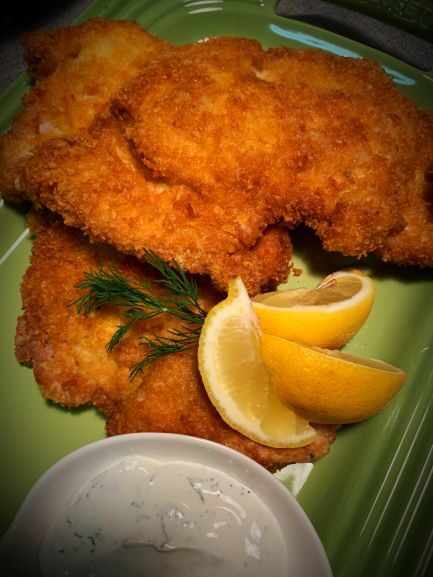When you think of a menu at any German food operation, more often then not you will see a Schnitzel of some kind on the menu. Sometimes it’s Weiner Schnitzel, sometimes it’s another kind. The fact is that Schnitzel’s origins are actually Austrian based. Weiner Schnitzel especially is famously Austrian, being sung by Julie Andrews as one of her favorite things alongside the Von Trapp Children in the Sound of Music. But a Schnitzel is defined as a thin slice of meat fried in fat. And many variations of this dish have been adapted by other countries and made their own. Some differentiated theirs by the breading, others by the cut and thickness of the meat and some by adding other sauces. We here in the US have even taken this cutlet and incorporated it into sandwiches and we see it frequently in dishes such as Chicken Parmesan.
In Austria and Germany, Weiner Schnitzel actually has a “protected geographical indication”. What is that? That means that the ingredients that are genuinely originated in that area are allowed to be identified as such in commerce. This also means it can protect the reputation of these regional foods and can promote agricultural and rural activity in the area. Additionally, it can lead to fair pricing for the producers of these goods and eliminate unfair pricing and stop misleading consumers with products that are not genuine. In short: it’s to take care of some of the most loved dishes in the EU and make sure they continue. They are legit about their food.
In Germany, the term “Schnitzel” actually applies to any cutlet of meat, not just fried ones. They mix things up by the accompaniments that go along with the meat such as a mushroom sauce, coating the meat with a horseradish or mustard before breading or serving it alongside French fries. “Jagerschnitzel” is one of the most well known takes on it includes a mushroom sauce but depending on the region, may or may not be fried.

I kept my take on Schnitzel as being very traditional. Beings that Pork is a famously used meat in Germany, we went with a boneless pork chop as our weapon of choice. Butterfly the pork and then pound it out with a meat tenderizer or another blunt object that will flatten everything out.

Make sure your pork is nice and thin. Line up your “Standard Breading Procedure” including flour, egg and breadcrumbs. I used cornflake breading that I made using cornflakes that have been pulsed in a food processor. This adds some extra crunch and helps with achieving this golden color.

Fry until golden brown on each side and keep warm in an oven while you complete the other pieces.

The dill sauce is an easy accompaniment using fresh dill, sour cream and just a few other ingredients. Serve your Schnitzel with lemon slices on the side for an added kick of acid to the dish.

Enjoy with a hearty beer! Prost!
Pork Schnitzel with Creamy Dill Sauce
Serves 4
- 2 quarts canola oil (vegetable, peanut or soybean oil can be used as well)
- 4 Boneless Pork Chops
- 1 1/2 cup flour
- 3 eggs, beaten
- 2 1/2 cups breadcrumbs
- 1 1/2 cup Sour Cream
- 3 Tbsp fresh Dill, chopped
- Juice from 1 lemon
- Salt & Pepper to taste
- Lemon Wedges to Garnish
Butterfly pork chops and open to resemble a book. Repeat with all pork chops until complete. Pound pork down using a meat tenderizer until all meat are thin cutlets.
Place flour, beaten eggs and breadcrumbs separately into three shallow dishes. Coat each cutlet in flour, then egg and then breadcrumbs. Repeat with each cutlet.
Line a sheet tray with paper towels and place next to range top. Heat oil in a thick bottom pan until it reaches 350 degrees. Carefully fry each cutlet in the oil on each side until golden brown. Remove from oil and place on paper towels to allow some of oil to drain.
Keep pork warm in oven as you continue to fry other pieces.
In a medium bowl, mix sour cream, dill, lemon juice and salt and pepper. Stir until all ingredients are combined.
Serve pork alongside lemons and dill sauce.

